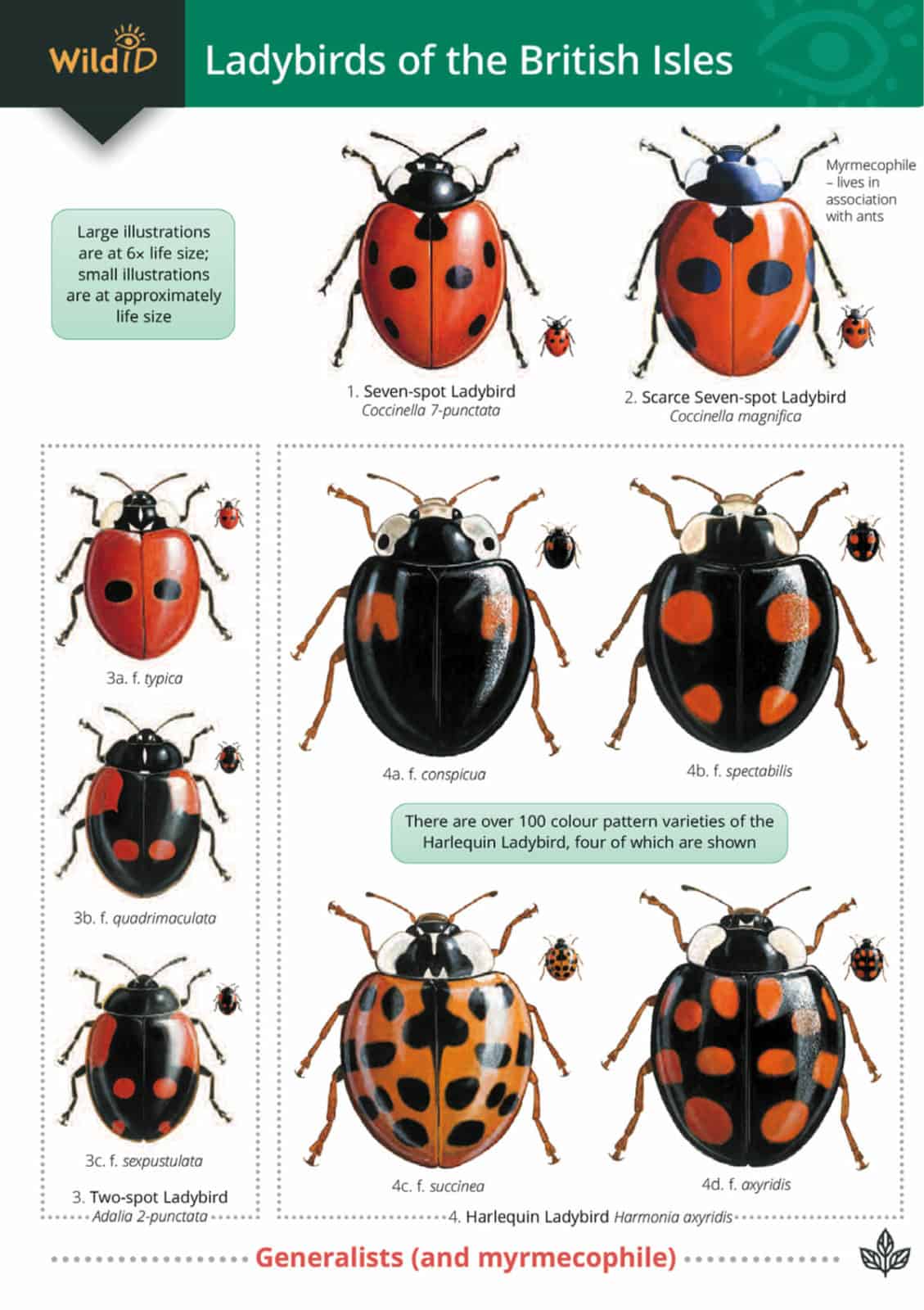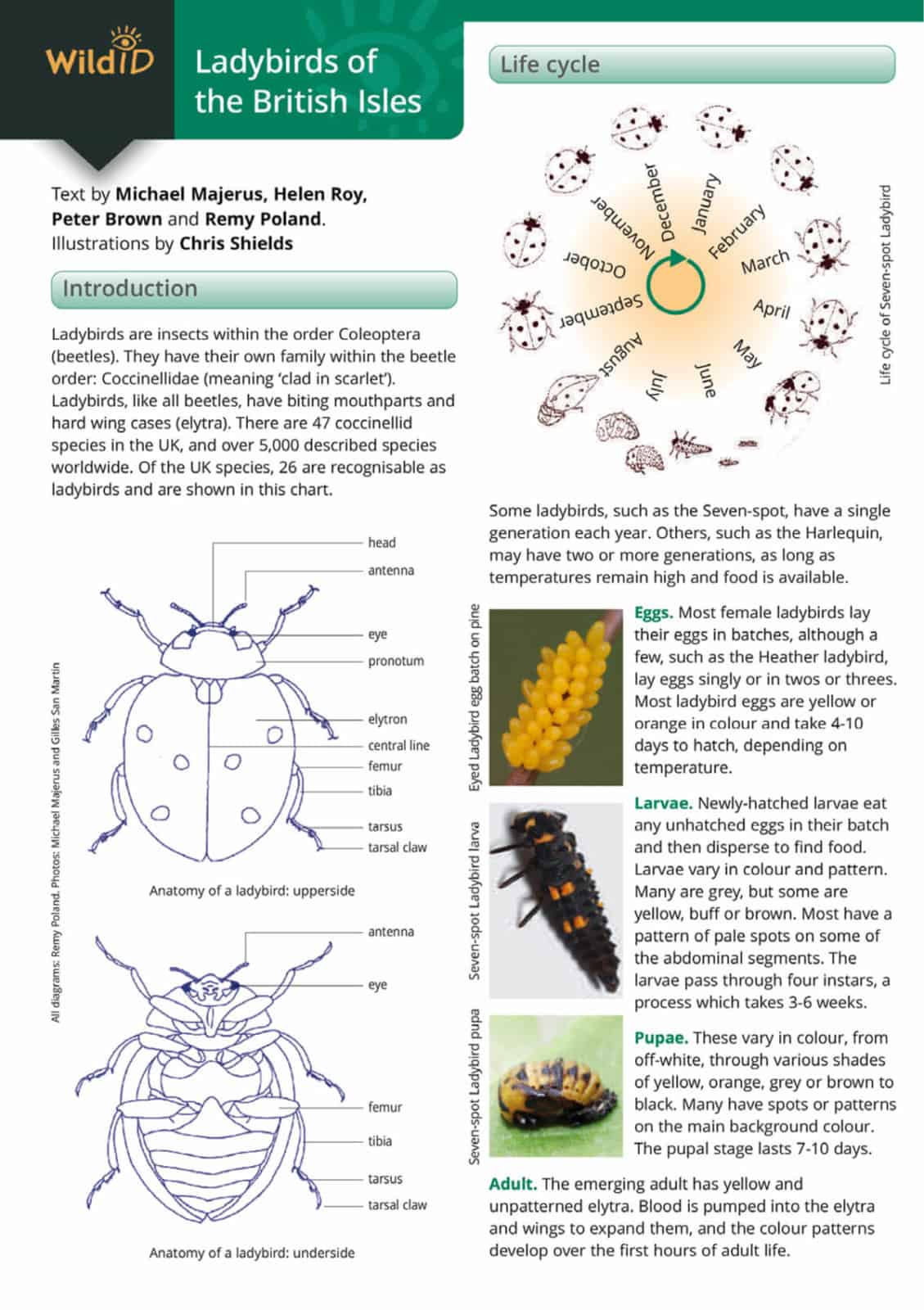Ladybirds guide
The Ladybirds identification guide covers the adults of 26 species in Britain and Ireland.
Beautiful colour paintings by Chris Shields show the key colours and patterns to look out when identifying ladybirds. Accompanying thumbnail illustrations show their actual life size clearly displayed the easy to follow ladybird chart.
The reverse side of the guide includes a ladybird identification table. This table covers the colour pattern, habitat, distribution, status and overwintering site for each species. There are also concise descriptions of the anatomy, life-cycle and diet of ladybirds.
Ladybirds are beetles. They have their own family within the beetle order. Worldwide there are over 5000 species. Like all beetles, ladybirds have biting mouthparts and hard wing cases. Many ladybirds are predatory. They feed on aphids and scale insects. Others graze mildew, while a couple of species feed on plants.
Some ladybirds, like the seven-spot, have a single generation each year. Most species undergo a period of winter dormancy before breeding. In contrast the harlequin can reproduce continuously through the spring, summer and even autumn. So harlequin populations can expand rapidly.
Many ladybirds are widespread and common. During the summer you should be able to make a good list in most gardens, parks and wildlife areas. Since arriving in 2003, the harlequin has spread across the UK. Thus in some gardens it is now the commonest ladybird.
The Ladybirds guide was produced in partnership with the UK Ladybird Survey.
Our popular British ladybird identification guide measures 24.5cmx17.5cm and is extremely lightweight so makes the perfect identification chart for popping in your bag when heading outside. All wildlife identification guides are laminated, meaning they are showerproof for use outside and can be wiped clean.








